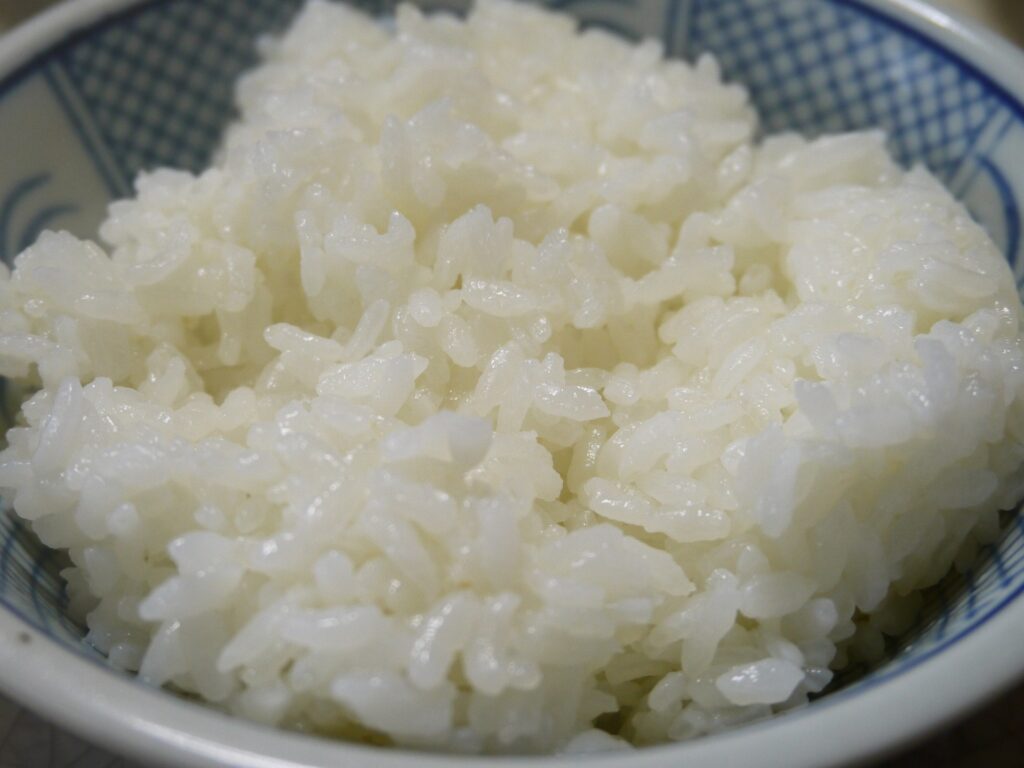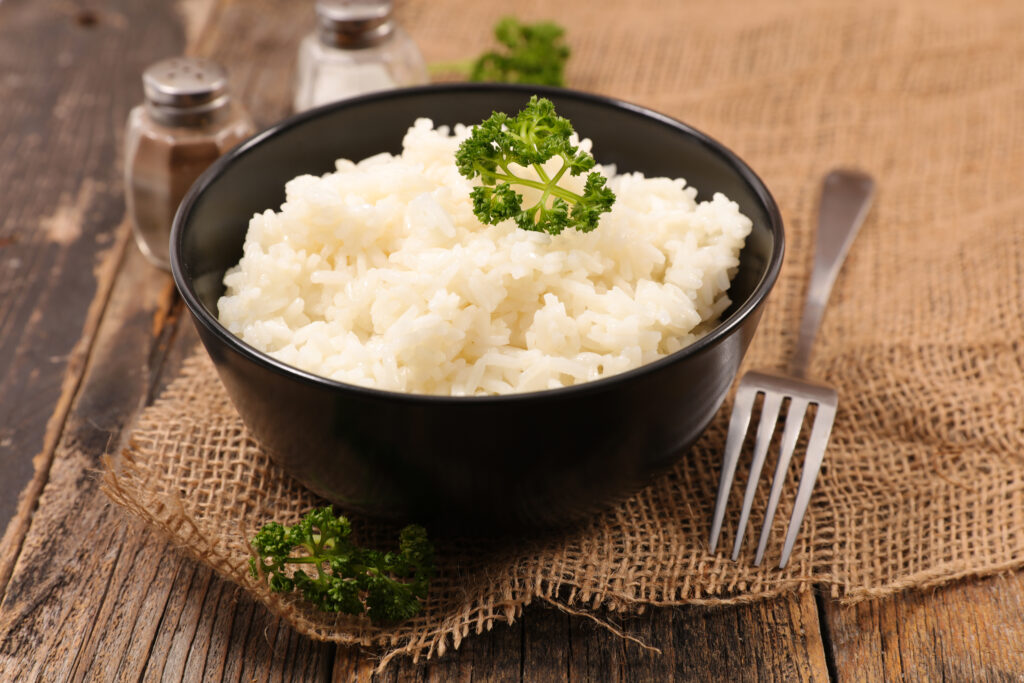Some of the links on this page are affiliate links, which means that Buzzy Kitchen earns commission from purchases made – at absolutely no extra cost to you. Thank you so much for supporting Buzzy Kitchen!
Have you ever seen a recipe for rice that tells you to ‘fluff’ it, but aren’t really sure what it means? It’s actually quite simple, and it’s probably going to be really obvious to you once I’ve told you. What does fluffing rice mean? Let’s dive right in and find out, shall we?
What Does Fluffing Rice Mean?
Fluffing rice literally means to fluff it up.
The best way to fluff rice is to grab yourself a fork and then stir it around the bowl of rice. The idea is that you use the fork to separate the grains of rice that stick together and form almost solid clumps.
You can also use other utensils to fluff rice, such as chopsticks (which some people prefer), or a rice paddle.
Clumpy, wet, or soggy rice are common problems with cooked rice, but there’s an easy solution to all of those problems: fluffing.

Photo by Polina Tankilevitch | Pexels
Why Do You Fluff Rice?
The whole point of fluffing rice is to get some air into it, separate the lumps and clumps, and let any still-present moisture and steam escape from inside those lumps and clumps.
Not-fluffed rice is often soggy, very wet, and quite clumpy.
Fluffed rice is the opposite: dry, not clumped together, and light.
When Are You Meant to Fluff Rice?
You are meant to fluff rice towards the end of the rice cooking process.
The final part of cooking rice involves letting the cooked rice sit in the saucepan or other cooking container, with the heat turned off, but with the lid on, for around 5 or 10 minutes.
After the 5 or 10 minutes have passed, the rice will be fully steamed or cooked, but it will likely be quite clumped together. This is when you should fluff the rice, helping the grains to separate and allowing you to serve up rice that is airy and fluffy rather than wet and stodgy.
You can (and should) fluff up rice that has been sat in a bowl or container for a little while. The longer the rice sits, the more it will clump together.

Image by Mamoru Masumoto from Pixabay
How to Fluff Rice
Using a fork, chopsticks, or a rice paddle, gently rake over and through the rice, separating the cooked grains and ensuring the ‘mound’ is fully aerated.
You shouldn’t stir the rice.
Nor should you mash the rice.
You should slice through the rice and gently fold it over itself.
Rigorous movement and aggressive beating of the grains will cause the starch to activate, which will then effectively ruin the rice dish. The starch will cause the rice to fall apart, and become gloopy and sticky.
You should be gentle when fluffing up the rice. Use shallow and quite slow movements.
The name gives you an idea of how rigorous you should (or shouldn’t) be: You are fluffing, not beating or whipping.
What Happens if You Don’t Fluff Rice?
In all fairness, nothing shockingly bad will happen if you don’t fluff rice, but it won’t be at peak quality.
Rice that hasn’t been fluffed tends to be really stodgy, heavy, and still quite waterlogged – and that’s the whole point of fluffing the grains after cooking. You do it to help avoid those exact problems. If you miss the fluffing part of the rice-cooking journey, you can’t really complain if you then experience problems.
Sorry, but it felt like the right moment for a little bit of tough love.
You can probably get away with not fluffing the rice if you drain it properly, and it is served with other things. Short grain rice needs fluffing more than long grain rice, too. So, you might get away with not-fluffing if you’re preparing the longer grain version of the two.
Give your rice a fluff the next time to cook rice. I bet you’ll find that it’s much nicer and more enjoyable to eat.
Can You Use a Spoon to Fluff Rice?
You could use a spoon to fluff rice, but the experts don’t recommend it.
The prongs of a fork help to separate the individual grains of rice, as well as injecting some air between them and allowing for trapped moisture to escape. Spoons do not do the job quite as well.

Not only that, spoons can batter and beat the individual grains of rice a little bit, which activates the starch content. When the starch is activated, the gloop-factor increases. The rice will start to stick together and clump, and it’ll be heavy and waterlogged too.
If you have a choice of fork vs spoon to fluff rice, I would recommend picking the fork. The spoon will likely do the exact opposite of what you’re trying to achieve.
What is a Rice Paddle?
I’m actually very glad you asked. If you have the option of a fork, a spoon, or a rice paddle, the rice paddle would win every time.
A rice paddle is designed to fluff and serve rice. That is literally the utensil’s job. You use the paddle to fold the rice, not beating it or stirring it and activating the starch, but lightly moving it around so that it has a chance to dry and stopping it from becoming clumpy.
The flat paddle is specifically designed to ‘cut’ through the rice without beating it, and the shape of the paddle itself also makes it easier to scoop and serve rice.
